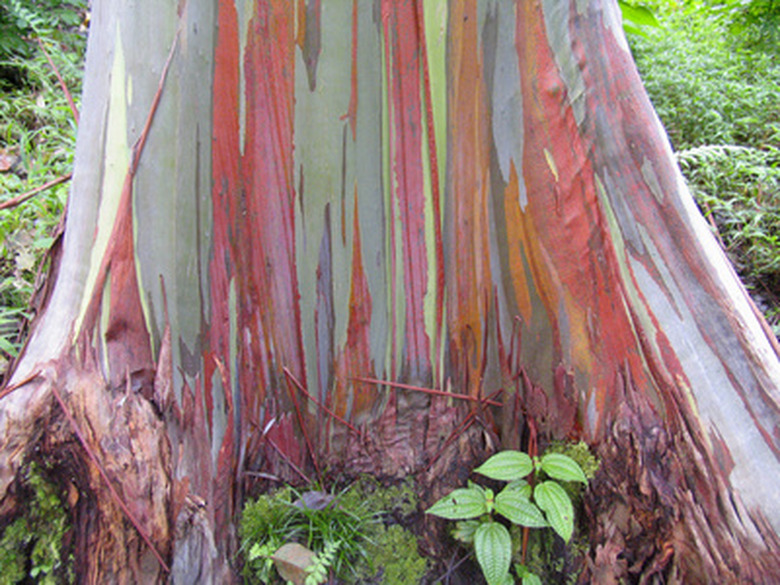How To Identify A Eucalyptus Tree
The eucalyptus tree is an evergreen tree that is native to Australia. In the United States, eucalyptus trees are grown indoors as houseplants, or outdoors in the Pacific Coast states. Although eucalyptus oil that is extracted from the tree has medicinal applications, the plant can be toxic to ingest in large quantities. The oil also has industrial applications as a machine oil, and may be used in perfumes because of its aromatic properties. Because of its distinct physical characteristics, eucalyptus trees are quite simple to identify.
Step 1
Examine the leaves of the tree that you suspect is a eucalyptus tree. Eucalyptus leaves are long and pointed with smooth sides and a leathery texture. Under a magnifying glass, you can see glands throughout the leaves that secrete oil.
- The eucalyptus tree is an evergreen tree that is native to Australia.
- Although eucalyptus oil that is extracted from the tree has medicinal applications, the plant can be toxic to ingest in large quantities.
Step 2
Explore the branches of the tree. Eucalyptus leaves alternate on the branches of the trees that they grow on.
Step 3
Search for flowers growing from the branches. Eucalyptus flowers appear as closed cups before they blossom. Once the cups open, they do not have petals. Instead they have a number of fluffy hairs that are actually flower stamens.
Step 4
Look over the flower stems for signs of fruit. Eucalyptus fruit is a small, woody capsule. It grows until it splits open, disgorging seeds.
- Explore the branches of the tree.
- Eucalyptus leaves alternate on the branches of the trees that they grow on.
Step 5
Touch the bark of a eucalyptus tree to determine its texture. Eucalyptus bark is stringy or flaky in texture. The bark may be deciduous, and may shed its outermost layer seasonally.
Eucalyptus Tree In A Pot Is Dead?
A dead or dying tree loses its leaves in large quantities, turning bare sometimes very quickly. Its bark may begin to crack, peel, warp or form holes that shouldn't be there, indicating the tree isn't getting any nutrients. When you water a dead eucalyptus tree, the water may stand or pool around the roots instead of being absorbed by the roots. If they break off easily and are dry and brown inside, then they're dead. For the most part, eucalyptus is disease-resistant, but, to be safe, avoid growing it or any other plant in a pot that harbored disease. Do not use the same watering schedule for a potted eucalyptus that you would use for one planted in the ground. Canopy size should mirror root size.
- Touch the bark of a eucalyptus tree to determine its texture.
- Its bark may begin to crack, peel, warp or form holes that shouldn't be there, indicating the tree isn't getting any nutrients.
